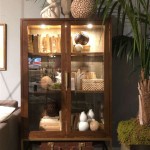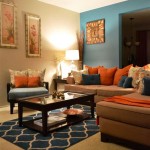Dining Room Decor: Simple Approaches for Elegant Spaces
The dining room serves as a central space for gathering, sharing meals, and creating lasting memories. A well-designed dining room should be both functional and aesthetically pleasing, reflecting the homeowner's personality. Achieving this balance doesn't necessarily require elaborate designs or extensive budgets. Simple, yet thoughtful, choices in dining room décor can yield elegant and inviting results. This approach focuses on selecting key pieces, incorporating natural elements, and maintaining a consistent style to create a space that is both practical and beautiful.
Prioritizing Functionality and Comfort
Before considering aesthetics, the dining room's functionality must be assessed. The size of the dining table should appropriately correspond to the room’s dimensions, allowing for comfortable movement around the space. Consider the number of people regularly using the room and any anticipated future needs. Extendable tables offer adaptability, accommodating both intimate dinners and larger gatherings. Chair selection is equally important; comfortable seating encourages guests and residents to linger and enjoy their time. Consider the height of the chairs in relation to the table and the materials which will influence the overall comfort and atmosphere. Investing in a high-quality, well-made table and chairs pays dividends in both longevity and enjoyment.
Establishing a Color Scheme and Texture Palette
Color plays a significant role in shaping the dining room atmosphere. A neutral color palette, such as whites, grays, and creams, provides a timeless backdrop that allows other décor elements to take center stage. These colors also create a sense of spaciousness and light, making the room feel airy and welcoming. Accent colors can be introduced through textiles, artwork, and accessories to add personality and visual interest. Consider incorporating textures to prevent the space from appearing sterile. Natural materials like wood, linen, and woven fabrics introduce warmth and depth. Mixing textures – smooth surfaces with rougher ones – creates visual intrigue and enhances a sense of tactile experience, making the dining room feel more inviting.
Selecting Purposeful Furniture Pieces
Beyond the table and chairs, carefully selected furniture pieces can enhance the dining room's functionality and style. A buffet or sideboard provides storage for tableware, linens, and serving dishes. This piece also serves as a surface for displaying decorative items. Consider the proportion of these pieces to the dining set and the overall room size. A hutch or display cabinet can showcase treasured items and provide additional storage for glassware and other dining necessities. When choosing furniture, prioritize quality craftsmanship and timeless designs. Rather than following fleeting trends, opt for pieces that are durable and will continue to complement the design scheme for years to come.
The Power of Lighting
Lighting is crucial in setting the ambiance of the dining room. A well-placed chandelier or pendant light over the dining table serves as a focal point and provides direct illumination. Consider the size of the light fixture in proportion to the table and the overall room dimensions. The type of light bulbs employed influences the room’s feel. Warm-toned bulbs create a cozy atmosphere, while cooler bulbs provide brighter illumination, better suited for detailed tasks. In addition to overhead lighting, incorporate ambient lighting through wall sconces or table lamps to create a layered lighting scheme. Dimmer switches allow for adjusting the light levels to suit the occasion, offering flexibility in creating different moods for meals and gatherings.
Incorporating Natural Elements
Bringing the outdoors inside can dramatically enhance the dining room’s atmosphere. Plants add a touch of life and freshness. Consider low-maintenance options like succulents, or incorporate flowers in vases on the table, sideboard, or elsewhere in the room. Natural materials such as wood, stone, and linen have an inherent warmth and texture that can soften the space. These elements can be incorporated through the dining table, chairs, placemats, and other accessories. Consider using a wooden dining table, linen table runners, and woven placemats to create a relaxed and inviting atmosphere. The use of natural elements contributes to a sense of calm and connection to the natural world, making the dining room a more welcoming space.
Accessorizing with Intention
Accessories should complement the overall design scheme and avoid cluttering the space. Choose items that are both functional and visually appealing. A centerpiece on the dining table can serve as a focal point, such as a simple vase of flowers, a group of candles, or a decorative bowl. Artwork on the walls can add personality and visual interest, reflecting the homeowner’s taste. Mirrors can be strategically placed to reflect light and create the illusion of a larger space. When selecting accessories, consider the color palette and the textures already present in the room. The goal is to create a sense of cohesion and balance, ensuring that each element contributes to the overall aesthetic.

30 Best And Plush Dining Room Decoration Ideas For Your Home

47 The Best Small Dining Room Design Ideas That You Can Try In Your Home Matchness Com Apartment

10 Dining Room Decor Ideas For Your Home Designcafe

Upgrade Your Dining Experience With These Simple Room Ideas Spacejoy

Cozy Dining Room Decorating Ideas Sanctuary Home Decor

54 Simple Dining Room Wall Decor Ideas Displate Blog

35 Important Solutions For Rustic Light Fixtures Dining Room Simple Step By Format Decoryourhomes Com Esszimmer Dekor Wohnen Esstisch Design

54 Simple Dining Room Wall Decor Ideas Displate Blog

40 Dining Room Decorating Ideas Bob Vila

Thrifty And Simple Spring Dining Room Ideas Pine Prospect Home
Related Posts







